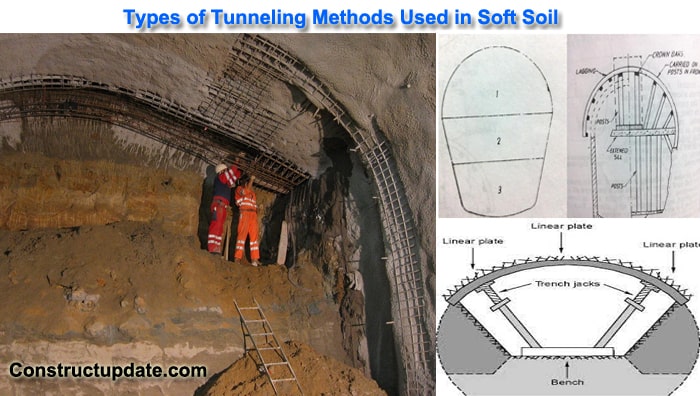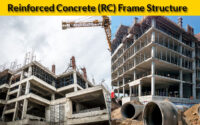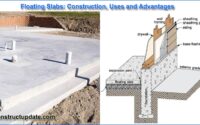6 Different Methods of Tunneling in Soft Soil
For urban services, soft-ground tunneling is widely used (subways, sewers, and other utilities). Because the ground arch in soft ground deteriorates with time, and to account for load changes resulting from future building or tunnel development, tunnel structures in the soft ground are often built to support the entire weight of the ground above them. Following are six different types of methods for tunneling in Soft Soil
1. Forepoling Methods of Tunneling:
Forepoling is a method of supporting a mine or tunnel’s weak roof, which has typically been utilized in soft, loose, or caving earth. Poles, lumber, steel tube, or slabs are driven into the ground before or during excavation to use this approach. For ages, the approach has been employed in both small and major mines and tunneling activities. With the passage of time, forepoling has evolved as a technique, and the old wooden supports have been replaced with more durable and sturdy metal supports. Even in shattered rock circumstances, these modern supports are capable of supporting the tunnel ceiling.
Under the following conditions, the tunnel forepoling method is commonly used for tunnelling in soft rock:
- Existence of Overburden and/or
- Unfavorable Ground Conditions
Fore poling can be done in three different ways.
- Method of sub-horizontal jet grouting
- Methods of Spilling
- Pipe Roofing Methods

2. Needle Beam Method
- For firm ground and brick lining, the Needle Beam Method is ideal.
- It’s made composed of a sturdy wooden beam from the main temporary support.
- When the soil roof can stand for a few minutes, the needle beam method is used.
- Needle Beam Length: 5 m to 6 m
Needle Beam Method Sequence
- A money drift for a short distance of 900 mm driven on the working face after a day’s work.
- Drift’s roof was supported by lagging carried on wooden segments, which were in turn supported by two trench jacks in front and two in the back.
- Needle beam is slowly skidded forward into monkey drift after this drift is completed.
- The front end of the beam is supported by a plank, while the back end is supported by a stout post resting on the tunnel floor’s lining.
- To support the segment, a Trench Jack is now installed on the center-line of the Needle Beam, transferring roof load to the Needle Beam.
- The remaining trench jacks were removed and widened sideways (drift) before being supported as before.
- When segments at the crown and sides reach the invert level, they form a ring of segments, resulting in arch action. Adjacent segments are connected by timber wedges.
- As the earth load was transferred to the arch segments, all jacks were released, the needle beam was further pushed, and the procedure was repeated.
3. Case Method or Army Method
- It was developed by the United States Army to build small tunnels at modest depths.
- A top brace is removed, and a small amount of ground is excavated.
- The box is shifted forward and the next cap is set.
The process is as follows:
- The top breast board is removed to advance the work, and the ground is excavated for a short distance of 8″ to 10″ ahead; the breast board is then placed in the new face and braced back.
- A ‘crutch’ or trench jack is used to set and hold the next cap board in place.
- After removing the dirt beneath each breast board, the breast boards are removed one at a time and reinstalled in a line below the top breast board, making a new advanced face.
- After inspecting the grade level, the sill boards have been advanced.
- The side posts are now properly secured between the sill board and top cap.
4. English Method
The greatest disadvantage of the English Method is that it involves the use of a lot of timber and frequent shifting for heavy timber logs back and forth.
The main feature of this method is that it excavates the entire tunnel section at once, using longitudinal strutting and alternating between masonry work and excavation.
English Method of Tunneling Sequence
- Driven to a height of 5 metres by the top head.
- It was held up by crown bars.
- Then the heading was widened, and the earth was dug away on each side.
- Then I began excavating Part -2 and installing the sill.
- Part 3: In the same manor, I began masonry.
5. American Methods of Tunneling
A drift is driven into the top of the tunnel and supported by laggings, caps, and two vertical posts in this method. The Drift’s sides are then widened, with additional support provided by timber planks and struts.
The process of widening continued until it reached the springing level, where wall plates were fixed and supported by vertical posts.
The vertical posts have now taken up the entire roof level, the drift supporting posts can be removed, and tunneling work can continue in a similar manner.
The American method is appropriate for large highway and railway tunnels.
It does not necessitate the use of heavy timbers and is simple to operate.
However, the American method is ineffective for tunnels with a flat bottom.
6. Belgian Method
- This is a popular technique that may be used on all types of fairly firm or hard soils.
- Crown bars, posts, and laggings drive and sustain a top centre heading for the entire arch’s ascent a b c d, identical to the English technique. On sills, the posts are preserved.
- Additional crown bars and posts are supported from the same sills as the heading, which is enlarged sideways.
- At the springing, the arch lining is built, and a horizontal bracing is placed between the ends of the arch.
- To bring the benching down to grade level, a trench M N O P is dug. Pockets are cut into the trench walls at regular intervals to allow beaches to be inserted to support the arch.
- The supporting side masonry is subsequently created, and the alternate areas between the coasts are cleaned. The shoring has been taken down, and the area has been filled with masonry. After that, the inversion is built.




